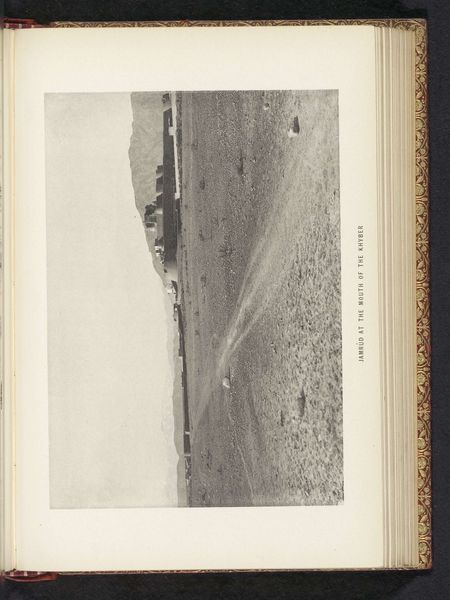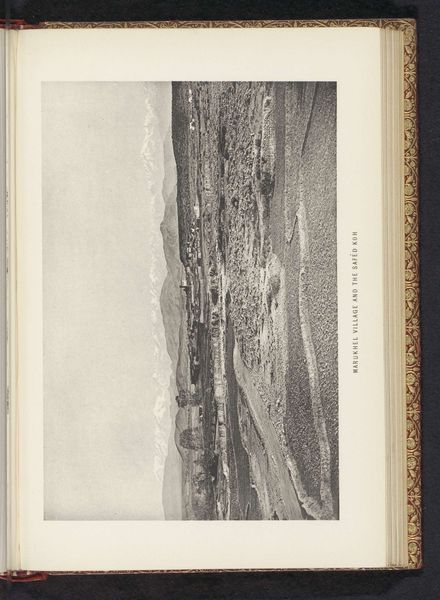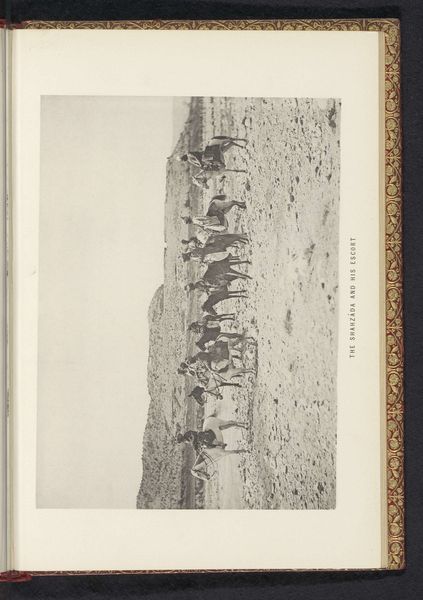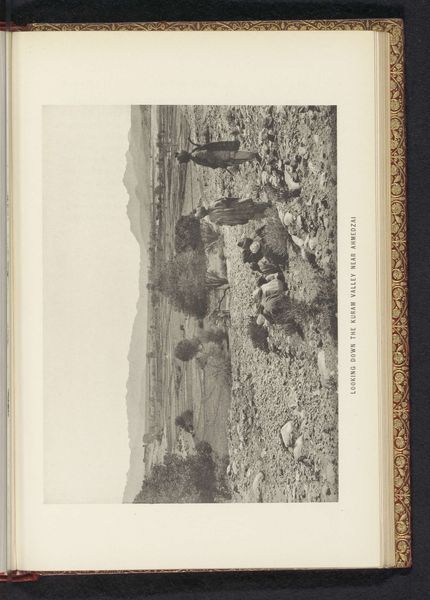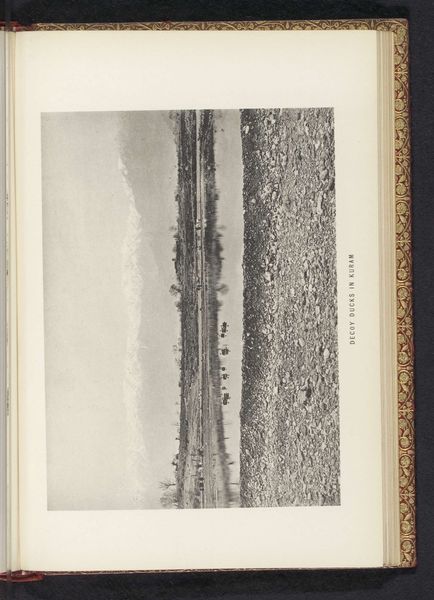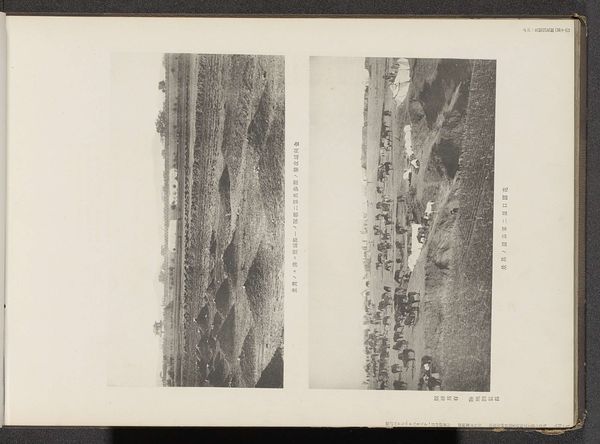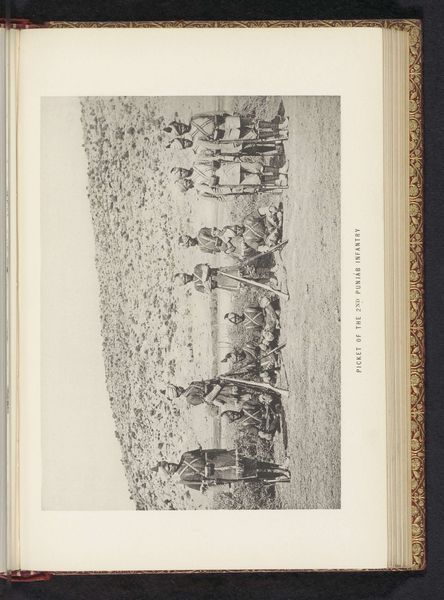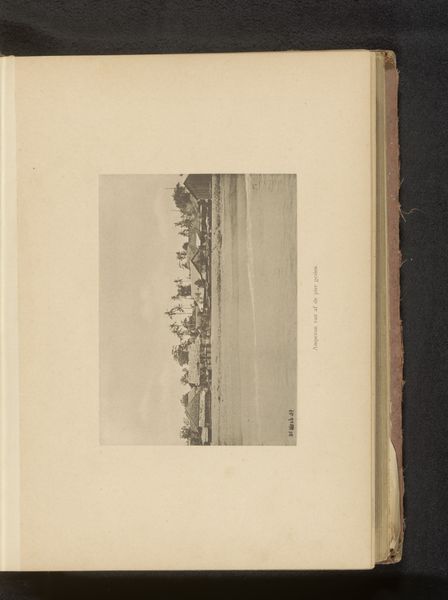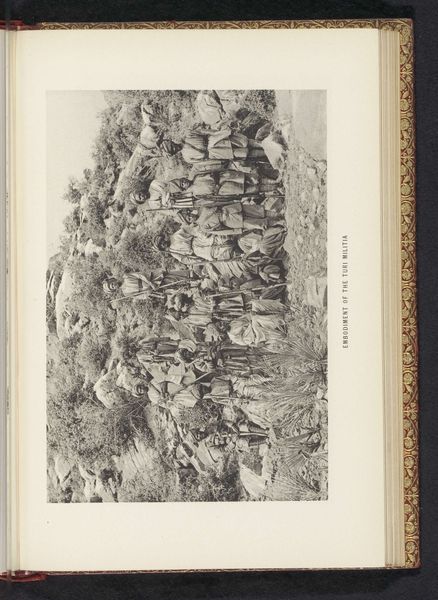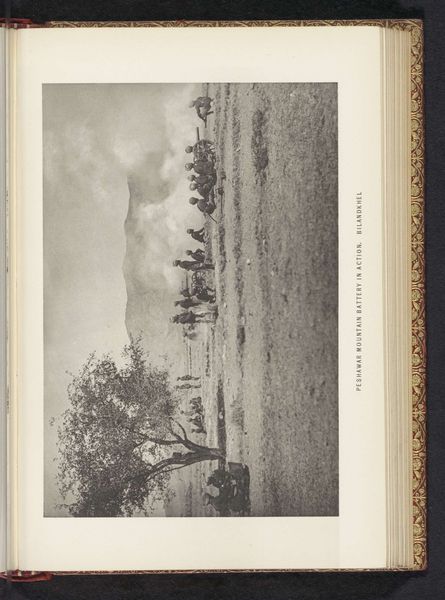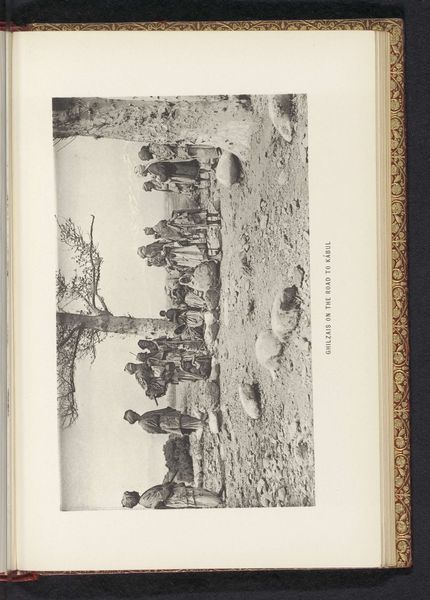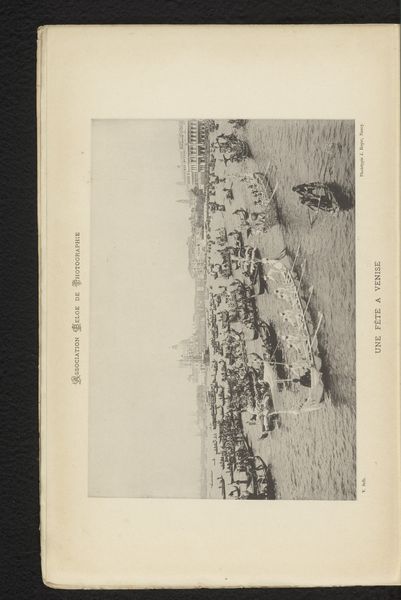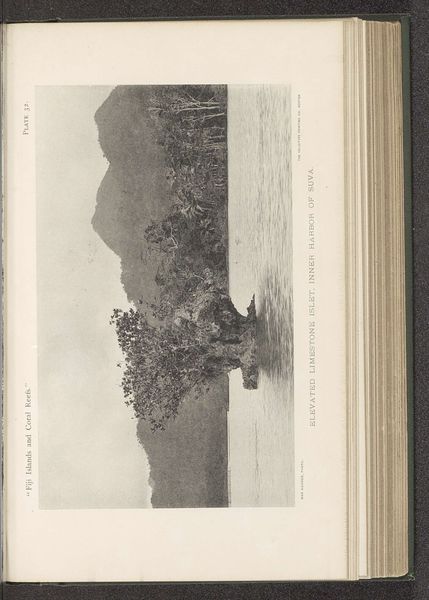
#
aged paper
#
toned paper
#
water colours
#
ink paper printed
#
carved into stone
#
coloured pencil
#
watercolour bleed
#
watercolour illustration
#
pencil art
#
watercolor
Dimensions: height 119 mm, width 168 mm
Copyright: Rijks Museum: Open Domain
Curator: This watercolour, dating from before 1895, is titled "Camp at Bilandkhel" and is by Frederick Saint John Gore. It’s a rather detailed, monochromatic wash depicting… well, a camp at Bilandkhel. What's your first impression? Editor: There’s an orderliness here, almost unsettling. Rows upon rows of tents receding into the distance. It’s regimented, clinical, rather dehumanizing, actually. A field of identical white triangles punctuated by arid terrain. Curator: Absolutely. The repetition creates a visual rhythm, but the subdued palette and aerial perspective remove any sense of individual activity. Note how Gore employs hatching and stippling to model the landscape, creating a subtle contrast with the smoother surfaces of the tents. It directs your eye to the structure, a planned imposition on this arid landscape. Editor: Yes, arid – a key signifier. This uniformity and order suggests military occupation. The camp isn’t temporary housing, it represents a symbol of power. The individual tent is lost, subsumed to represent military control and function. Watercolours and pencil create an image of bleached-out, weary authority. Curator: Quite right. Watercolours offer a detached coolness; you mentioned the bleaching. Consider, too, that this was likely intended as documentary work, mapping terrain, personnel. Editor: And, subconsciously, it communicates not just data, but also purpose. This view and camp could mean "expansion" or, depending on how the viewer feels about colonialism, it might signal conquest, erasure and oppression, its forms repeated endlessly. This watercolour speaks on many symbolic levels, from political to emotional. Curator: A vital consideration: while seemingly neutral in its presentation, a work of this nature from this historical period, such a landscape, inherently possesses ideological weight, communicated as much by its precise arrangement of visual components as it does the subject itself. Editor: I agree. One last thought; consider the role of art to serve the symbolic order. This reminds us that images and symbols are loaded carriers of meaning; understanding that helps to bring insight, and sometimes uncomfortable recognition, about history, as much now as then. Curator: Yes, "Camp at Bilandkhel" reminds us how careful compositional construction enhances an artwork's power to reflect historical narratives in complicated ways.
Comments
No comments
Be the first to comment and join the conversation on the ultimate creative platform.
